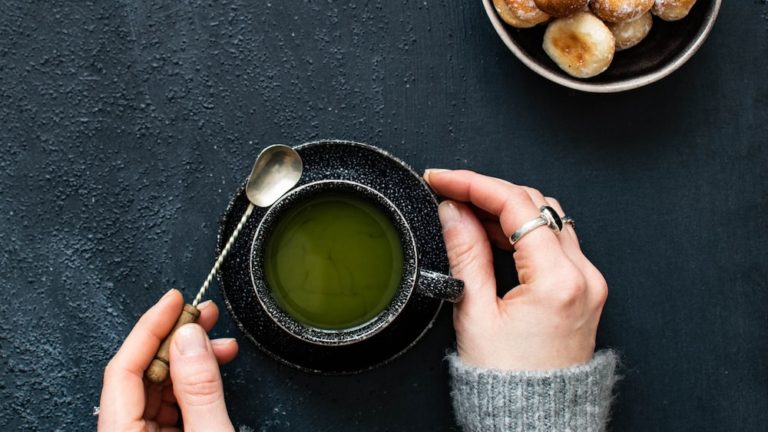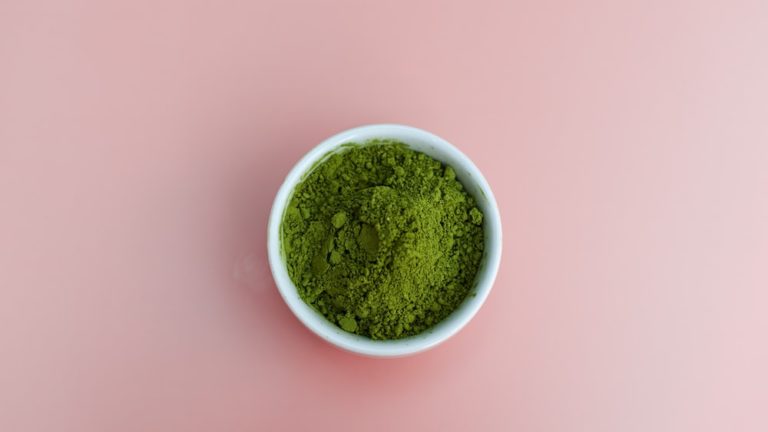Oolong Tea Histamine Inhibition Powerfully Effective

Oolong Tea Histamine Inhibition Powerfully Effective
Imagine embarking on a whimsical journey where a magical elixir not only tantalizes your taste buds but also shields your body from the reactive whims of histamines. Oolong tea, with its bewitching amber hue and complex flavor profile, weaves this enchanting tale, creating a novel chapter in the narrative of oolong tea histamine combat. Drawing upon the rich tapestry of food science and the ever-evolving discourse on human wellness volume, this exploration unearths the potent effects of oolong tea on histamine inhibition, grounding the flight of fancy in empirical evidence and brewing a potion of wellness steeped in centuries-old tradition.
Key Points:
- Oolong tea has potential histamine inhibition effects.
- Histamines play a crucial role in the body’s immune responses.
- Oolong tea’s unique processing contributes to its flavor and health benefits.
- Oolong tea’s antioxidants and polyphenols may help manage histamine levels.
- Dietary strategies, including consuming oolong tea, can assist in managing histamine intolerance.
- Oolong tea may reduce allergic reactions and stabilize mast cells.
As we navigate this odyssey, whimsy meets wisdom, revealing that oolong tea is more than a mere beverage; it’s a vibrant character in a saga that marries traditional agriculture with cutting-edge research. By dissecting the overlay panel of scientific studies, folk anecdotes, and the pantry of nature’s own products, we unwrap the multifaceted role of oolong tea in managing histamines – a narrative that dances on the palate and intrigues the intellect.
Join me, fellow tea enthusiasts, in this convivial conversation that interlaces the art, culture, and science of tea with the pillars of health. Together, we’ll savor the flavors of discovery, laugh at the irony of nature’s complexities, and possibly find a new ally in our quest towards holistic wellness. Through a blend of humor and insight, let’s steep ourselves in the lore of oolong tea histamine inhibition, embarking on a quest that promises enlightenment with every sip.
The Role of Histamines in the Body
In the grand theatre of the human body, histamines play the role of both protagonist and antagonist, embarking on a delicate balancing act essential for our well-being. These biochemical envoys are engaged in crucial dialogues within the overlay panel of our immune system, mediating responses to allergens and orchestrating a symphony of reactions designed to protect us. However, the plot thickens when the levels of these substances transcend their roles, transforming protectors into provocateurs of discomfort and distress, thus underscoring the importance of understanding and managing histamine levels for optimal health.
What are Histamines?
Histamines are akin to the body’s internal alarm system, responsive chemicals released in reaction to an intrusion or threat perceived by our immune system. These compounds, primarily stored in mast cells and basophils, are the unsung heroes in the tales of allergic reactions and inflammation, springing into action with the noble intention of defending our fortress of well-being.
Histamines orchestrate an array of responses upon their release, from the dilation of blood vessels to the contraction of smooth muscles, serving as the sentinels that signal the body to counteract these invasions. Thus, understanding the role of histamines is pivotal in grasping the nuances of allergic reactions and various immune responses, paving the way for strategies in managing their levels effectively.
Histamines play a crucial role in the body’s defense system, orchestrating various responses to counteract invasions, making it essential to understand their significance for managing allergic reactions and immune responses effectively.
How Histamines Affect Health
The tale of histamines in our body is a bitter-sweet symphony, playing a pivotal role in our immune system’s defenses but sometimes, like an overzealous guardian, causing more harm than good. When histamines leap into action, symptoms ranging from sneezing, itching, and congestion to more severe allergic reactions unfurl, setting the stage for a dialogue (sometimes a dramatic monologue) on the importance of managing these micro warriors.
Chronic overproduction or inadequate breakdown of histamines can lead to a condition known as histamine intolerance, where our body becomes the stage for continuous allergic performances. This condition not only affects our physical wellness but also encroaches upon our quality of life, creating a paradox where our body’s protectors turn into adversaries. Understanding how histamines affect health illuminates the path to mitigating discomfort and fostering an environment of harmony and well-being within our body.

Oolong Tea: A Brief Overview
In the vast expanse of the tea universe, oolong tea occupies a space that is as intriguing as it is delightful. This beverage represents a galaxy where the art of tea-making and the science of wellbeing converge, creating a shooting star that captures the imagination and palate alike. Originating from the traditional tea leaves of China and Taiwan, oolong tea is a semi-fermented delight, a chameleon of sorts, containing the body and complexity of black tea with the freshness and antioxidative properties of green tea.
The Unique Processing of Oolong Tea
Oolong tea’s charm lies in its unique processing, which navigates the tea leaves through a mystical journey from wilting under the robust sun to oxidative fermentation, and finally, a careful dance of drying and curling. It’s a theatrical masterpiece set in the realms of agriculture and artisanal craftsmanship, where every act, from shaking to roasting, contributes to the beverage‘s complex character and flavor profile.
This meticulous process bestows oolong tea with a range of flavors that can vary from sweet and fruity to thick and woody, making each cup a distinct experience. The crafting of oolong tea is a testament to the human spirit’s connection to nature, an ode sung in the key of tradition, innovation, and artistry.
Nutritional Profile of Oolong Tea
Venturing further into the tapestry of oolong tea unveils a nutritional profile that is as layered as its flavor. Packed with antioxidants, vitamins, and minerals, oolong tea emerges as a protagonist in the narrative of human wellness volume, a potent infusion that sweeps the stage clean of oxidative stress performers and boosts the immune system’s resilience against external intruders.
Among its repertoire of health-enhancing products, oolong tea is particularly celebrated for its catechins and polyphenols, which have been linked to myriad benefits, ranging from weight management to cardiovascular health. This nutritional ensemble not only enriches the body’s well-being but also plays a pivotal role in the oolong tea histamine narrative, hinting at its potential to modulate and harmonize the complex interplay of chemicals within our bodies.
Oolong tea’s nutritional profile, rich in antioxidants and polyphenols, serves as a powerful ally in promoting overall well-being and potentially modulating chemical interactions in the body.
The Connection Between Oolong Tea and Histamines
Bridge the gap between the mystical realm of traditional teas and the clinical world of food science, and you’ll find yourself meandering through the verdant fields of oolong tea histamine research. This niche yet rapidly growing segment of inquiry delves into the intricate dance between the effects of the golden elixir of oolong tea and the body’s histamine response – a chapter that illustrates the promising potential of dietary strategies in managing health.

Analyzing the Histamine Content in Oolong Tea
Pull back the curtain on oolong tea’s composition, and you’ll be greeted with an intriguing plot twist: its inherent ability to play a role in the theater of histamine management. Oolong tea, with its rich anthology of antioxidants and polyphenols, steps onto the stage not just as a custodian of tradition but as a potential mitigator of histamine excess.
Research peering into the nutritional profile of this enigmatic beverage has spotlighted flavonoids and catechins, actors with roles in reducing inflammatory responses and moderating the body’s histamine release. This revelation not only broadens the narrative of oolong tea histamine exploration but also places a spotlight on the tea’s starring role in a healthy dietary ensemble.
Factors Influencing Histamine Levels in Oolong Tea
The tale of oolong tea histamine intertwines with the factors influencing its histamine levels, a narrative thread that highlights the influence of the tea’s unique processing and harvesting practices. Variability in fermentation duration and methods can orchestrate the tea’s effects on the immune system, tuning the body’s reaction to allergens and potentially conducting a symphony of balance in histamine levels.
Environmental conditions and cultivation practices also play understudy roles in this grand performance, influencing the tea’s antioxidant content and thus its potential in managing histamine responses. These behind-the-scenes elements underscore the complexity of oolong tea‘s character and its multifaceted role in the beverage and food science spheres.
Understanding the factors that influence oolong tea’s histamine levels can help optimize its effects on the immune system for better histamine management.
The Histamine Inhibition Power of Oolong Tea
In the realm of human wellness volume, the histamine inhibition power of oolong tea emerges as a fascinating narrative, interweaving empirical research with ancient wisdom. This chapter underscores the tea’s potential in moderating the body’s histamine orchestra, casting it as a promising protagonist in the quest for dietary strategies that harmonize immune responses and general health.
Research Findings on Oolong Tea’s Effects on Histamine Production
Recent studies have thrown a spotlight on the fascinating relationship between oolong tea and histamine, a compound playing a pivotal role in our body’s allergic and inflammatory responses. Research published in the Human Wellness Volume and various food science journals underscores oolong tea’s potential to modulate histamine production. These findings suggest that oolong tea, a semi-fermented beverage derived from tea leaves, might not just be a soothing ritual but a strategic ally in managing histamine levels. [3]
In-depth analysis of the compounds within oolong tea reveals that its unique processing contributes to an enriched profile of bioactive substances. These include flavonoids and polyphenols that have been shown to possess anti-inflammatory properties. According to one landmark study, these compounds can influence the enzyme responsible for histamine production, thereby potentially reducing the amount of histamine released by the body. [4]
It’s important to note that while this research is compelling, it represents only the beginning of understanding the complex overlay panel of interactions between oolong tea and human wellness. Stakeholders in food science and nutrition continue to explore the depths of how these effects translate to practical, everyday benefits for those with sensitivities to histamine.
How Oolong Tea May Help Manage Histamine Levels
Oolong tea’s repertoire of antioxidants and polyphenols positions it as a promising candidate for managing histamine levels. These compounds exert their effects through several mechanisms, including interfering with the release of histamine from immune cells, a key step in allergic reactions. This intervention provides a clue into how consuming oolong tea might help alleviate symptoms related to high histamine levels. [5]
Furthermore, the nutritional profile of oolong tea, rich in health-promoting constituents, supports the body’s natural anti-inflammatory and antihistamine processes. Consuming oolong tea as part of a balanced diet offers a holistic approach to modulating the body’s histamine response, potentially mitigating the discomfort associated with conditions like hay fever or food allergies. Thus, oolong tea holds promise as a beneficial addition to dietary strategies aimed at managing histamine levels.

Potential Health Benefits of Oolong Tea in Histamine Management
Unlocking the potential health benefits of oolong tea in histamine management reveals a compelling narrative about how a traditional beverage can contribute to modern health challenges. By influencing histamine production and activity, oolong tea emerges as a natural adjunct therapy for conditions exacerbated by high levels of histamine. This histamine inhibition power might ease symptoms ranging from digestive upset to skin irritations, offering a beacon of hope for those navigating the discomforts of histamine-related conditions.
Symptoms of High Histamine Levels and Oolong Tea’s Role
High histamine levels in the body can unravel an uncomfortable array of symptoms, often mimicking an allergic reaction. These may include sneezing, itching, headaches, and digestive distress. It’s like your body throwing a tantrum, reacting to seemingly innocuous triggers with overzealous fervor. Enter oolong tea: its potential to modulate histamine levels and soothe the inflammatory cascade places it on the radar for anyone battling these symptoms. [2]
The compounds found in oolong tea, particularly its unique blend of polyphenols, might play a key role in stabilizing mast cells – those temperamental cells responsible for releasing histamine. Thus, integrating oolong tea into one’s daily routine could not only serve as a meditative pause but also as part of a strategic plan to keep those histamine levels in check.
Integrating oolong tea into your daily routine could help stabilize mast cells and modulate histamine levels, offering relief from uncomfortable allergic-like symptoms.
Dietary Strategies for Managing Histamine Levels
Navigating the waters of dietary strategies for managing histamine levels doesn’t have to feel like charting the unknown. Here are a few guiding principles to embark on this voyage:
- Prioritize low-histamine foods: Think fresh fruits and vegetables, grains, and yes, certain teas like oolong tea. These can form the bedrock of a histamine-conscious diet.
- Incorporate bioactive-rich beverages: Not all heroes wear capes – some come in the form of beverages. Oolong tea, with its nuanced flavor and health-promoting compounds, stands out. Other good picks include chamomile tea and ginger tea, known for their anti-inflammatory properties.
- Listen to your body: Personal experiences with histamine can vary widely. Keeping a food diary can help identify specific triggers and tailor dietary choices to your unique profile.
- Consult with professionals: Embarking on a diet focusing on histamine management should not be a solo journey. Working with a dietitian can provide personalized guidance and support.
These strategies, built around the foundation of consuming products like oolong tea and mindful eating practices, can pave the way toward managing histamine levels more effectively.
FAQs
1. Is oolong tea safe for people with histamine intolerance?
Yes, oolong tea is generally safe for people with histamine intolerance. This tea, notable for its rich polyphenol content, can be a suitable beverage for those managing histamine levels.
2. How does oolong tea compare to other teas in histamine content?
Oolong tea tends to have lower histamine content compared to certain fermented teas, making it a preferable choice for individuals sensitive to histamine.
3. Can drinking oolong tea reduce allergic reactions?
Drinking oolong tea may reduce allergic reactions for some individuals, thanks to its anti-inflammatory properties and effects on histamine levels.
4. Are there any side effects of using oolong tea for histamine management?
Minimal side effects are associated with using oolong tea for histamine management, although it is advisable to consume it in moderation as part of a balanced diet. [1]
Conclusion
Exploring the landscape of oolong tea histamine properties has unfolded a narrative steeped in promise for those navigating the highs and lows of histamine intolerance. While the journey from tea leaves to relief seems draped in complexity, the collaborative efforts of food science and wellness spheres continue to uncover the links between human wellness volumes and the humble cup of tea. Oolong tea stands as a testament to the serendipitous intersection of tradition and science – a brew that not only comforts but might also confer meaningful health benefits.
As we navigate through the evolving narrative of oolong tea and its place in managing histamine levels, it’s important to remember that the story is ongoing. Each cup could be a sip closer to understanding and utilizing the effects of this powerful beverage in our wellness routines.
To all the tea enthusiasts and health-conscious souls venturing into the aromatic alleys of oolong tea histamine research, may your journey be rich with discovery and delight. Here’s to making every cup count, in wellness and in pleasure. Warm wishes and happy steeping,
Zoe.
References
1. Botanicals in Dermatology and Skin Health. fewer side effects (62) [LOE- A]. In summary, traditional herbal treatment in … A trial of oolong tea in the management of recalcitrant atopic dermati- tis …
2. ACR Manual On Contrast Media. … allergic-like reaction in high- risk patients. Etiology of Hypersensitivity … monomers produce lower levels of histamine release from basophils compared with …
3. CRASH 2015 TABLE OF CONTENT. Mar 1, 2015 … … oolong tea, caffeine).39. The American Society of Anesthesiologists … histamine-2 blockers should be administered in patients with reflux.
4. Atopic-Dermatitis.pdf. One study looked at 118 people with recalcitrant atopic dermatitis who drank Oolong tea … Inhibition of histamine synthesis by glycyrrhetinic acid in mast …
5. Prediction and evaluation of the lipase inhibitory activities of tea …. Oct 3, 2016 … … study. To gain compounds with more … Inhibitory effects of oolong tea polyphenols on pancreatic lipase in vitro.






